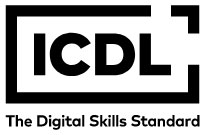Enhancing Security through Autonomous Learning Multi-Model Classification of 3D Palmprints: The ALMMo-0 Framework
Abstract
As research progresses, biometric technologies have achieved notable effectiveness in personal identification. However, despite these advancements, there persists a demand for improved performance in security applications. ALMMo-0, the Autonomous Learning Multi-Model Classifier of zeroth order introduces a novel approach to address this challenge. It effectively addresses the challenges of Enhancing global efficiency in supervised 3D palmprint identification, autonomy, non-iterative procedures, and complete transparency. This study presents an innovative method Utilizing ALMMo-0 for enhancing 3D fingerprint-based authentication systems. The approach utilizes a feedforward methodology driven solely by data and non-iterative processes, leveraging three primary Techniques such as Local Phase Quantization (LPQ), GIST, and Binarized Statistical Image Information (BSIF) are employed to extract relevant details from three-dimensional palmprint images.. Following feature extraction, ALMMo-0 autonomously generates AnYa Fuzzy Rule Base (FRB) sub-classifiers for individual categories, establishes a multimodal framework, and extracts data clouds. For authentication, The system utilizes a 'winner-takes-all' strategy for classifying incoming data, generating a confidence score that reflects the mutual distribution objectively. Tests performed on a 3D Palmprint dataset illustrate the efficacy of ALMMo-0, showcasing its performance using metrics Examples include metrics such as receiver operating characteristic (ROC) curves, rank-1 accuracy, equal error rate (EER), and cumulative match curve (CMC).. The experimental evaluations demonstrate outstanding performance of the proposed method, achieving perfect rank-1 accuracy, minimal EER, and significant features such as interpretability and computational efficiency.
Full Text:
PDFReferences
Chaa M, Akhtar Z, Attia A (2019) 3D palmprint recognition using unsupervised convolutional deep learning network and SVM classifier. IET Image Process 13(5):736–745. https://doi.org/10.1049/iet- ipr.2018.5642
Cui J (2014) 2D and 3D palmprint fusion and recognition using PCA plus TPTSR method. Neural Comput & Applic 24(3–4):497–502. https://doi.org/10.1007/s00521-012-1265-y
Jaafar H, Ibrahim S, Ramli DA (2015) A robust and fast computation touchless palm print recognition system using LHEAT and the IFkNCN classifier. Computational intelligence and neuroscience 2015:1–17. https://doi.org/10.1155/2015/360217
Li W, Zhang L, Zhang D et al. (2010) Efficient joint 2D and 3D palmprint matching with alignment refinement. 2010 I.E. Computer Society Conference on Computer Vision and Pattern Recognition (CVPR 2010), San Francisco, CA, USA. IEEE Computer Society, Washington, DC, USA, p. 795–801. DOI: 10.1109/ CVPR.2010.5540134
Sun Z, Tan T, Wang Y et al. (2005) Ordinal palmprint represention for personal identification. 2005 I.E. Computer Society Conference on Computer Vision and Pattern Recognition (CVPR 2005), San Diego, CA, USA. IEEE Computer Society, Washington, DC, p. 279–284. DOI:10.1109/CVPR.2005.267.
Angelov PP, Zhou X (2008) Evolving fuzzy-rule-based classifiers from data streams. IEEE Trans Fuzzy Syst 16(6):1462–1475
Akhtar Z, Alfarid N (2011) Secure learning algorithm for multimodal biometric systems against spoof attacks. In: Proc. international conference on information and network technology (IPCSIT), pp 52–57
Akhtar Z, Foresti GL (2016) Face spoof attack recognition using discriminative image patches. Journal of electrical and Computer Engineering. 1–14. DOI:10.1155/2016/4721849
Liu M, Li L (2012) Cross-correlation based binary image registration for 3D palmprint recognition. In: 2012 IEEE 11th International Conference on Signal Processing. IEEE, pp 1597-1600. DOI: 10.1109/ ICoSP.2012.6491885
Sun Z, Tan T, Wang Y et al. (2005) Ordinal palmprint represention for personal identification. 2005 I.E. Computer Society Conference on Computer Vision and Pattern Recognition (CVPR 2005), San Diego, CA, USA. IEEE Computer Society, Washington, DC, p. 279–284. DOI:10.1109/CVPR.2005.267.
Yang B, Wang X, Yao J, Yang X, Zhu W (2013) Efficient local representations for three-dimensional palmprint recognition. Journal of Electronic Imaging 22(4):043040. https://doi.org/10.1117/1. JEI.22.4.043040
Zhang D, Lu G, Li W, Zhang L, Luo N (2008) Three dimensional palmprint recognition using structured light imaging. In: 2008 IEEE Second International Conference on Biometrics: Theory, Applications and Systems, IEEE, pp 1-6. DOI: 10.1109/BTAS.2008.4699346
Zhang D, Kanhangad V, Luo N, Kumar A (2010) Robust palmprint verification using 2D and 3D features. Pattern Recogn 43(1):358–368. https://doi.org/10.1016/j.patcog.2009.04.026
Zhang D, Lu G, Li W et al (2009) Palmprint recognition using 3-D information. IEEE Transactions on Systems, Man, and Cybernetics - Part C: Applications and Reviews 39(5):505–519. https://doi.org/10.1109
/TSMCC.2009.2020790
Li W, Zhang D, Zhang L, Lu G, Yan J (2011) 3D palmprint recognition with joint line and orientation features. IEEE Transactions on Systems, Man, and Cybernetics - Part C: Applications and Reviews 42(2): 274–279. https://doi.org/10.1109/TSMCC.2010.2055849
Liu M, Li L (2012) Cross-correlation based binary image registration for 3D palmprint recognition. In: 2012 IEEE 11th International Conference on Signal Processing. IEEE, pp 1597-1600. DOI: 10.1109/ ICoSP.2012.6491885
Sun Z, Tan T, Wang Y et al. (2005) Ordinal palmprint represention for personal identification. 2005 I.E. Computer Society Conference on Computer Vision and Pattern Recognition (CVPR 2005), San Diego, CA, USA. IEEE Computer Society, Washington, DC, p. 279–284. DOI:10.1109/CVPR.2005.267.
Meraoumia A, Chitroub S, Bouridane A (2013) 2D and 3D palmprint information, PCA and HMM for an improved person recognition performance. Integrated Computer-Aided Engineering 20(3):303–319. https://doi.org/10.3233/ICA-130431
Zhang L, Shen Y, Li H, Lu J (2015) 3D palmprint identification using block-wise features and collaborative representation. IEEE Trans Pattern Anal Mach Intell 37(8):1730–1736. https://doi.org/10.1109/TPAMI.2014.2372764
Chaa M, Boukezzoula N-E, Attia A (2017) Score-level fusion of two-dimensional and three-dimensional palmprint for personal recognition systems. Journal of Electronic Imaging 26(1):013018. https://doi. org/10.1117/1.JEI.26.1.013018
Otsu N (1979) A threshold selection method from gray-level histograms. IEEE transactions on systems, man, and cybernetics 9(1):62–66. https://doi.org/10.1109/TSMC.1979.4310076
E. Land and J. McCann, Lightness and retinex theory, Journal of the Optical Society of America, 61 (1971), p. 1–11. http://dx.doi.org/10.1364/JOSA.61.000001 envelope. Int J Comput Vis 42(3):145–175. https://doi.org/10.1023/A:1011139631724
D.J. Jobson, Z. Rahman, and G.A. Woodell, A multiscale retinex for bridging the gap between color images and the human observation of scenes, IEEE Transactions on Image Processing, 6 (1997), pp. . 965–976. http://dx.doi.org/10.1109/83.597272
Oliva A, Torralba A (2001) Modeling the shape of the scene: a holistic representation of the spatial envelope. Int J Comput Vis 42(3):145–175. https://doi.org/10.1023/A:1011139631724
Belhumeur PN, Hespanha JP, Kriegman DJ (1997) Eigenfaces vs. Fisherfaces: recognition using class specific linear projection. IEEE Trans Pattern Anal Mach Intell 19(7):711–720. https://doi.org/10.1109/34.598228
Turk M, Pentland A (1991) Eigenfaces for recognition. J Cogn Neurosci 3(1):71–86. https://doi.org/10.1162/jocn.1991.3.1.71
Boots B, Kokichi S, Sung NC, Atsuyuki O (2009) Spatial tessella- tions: concepts and applications of voronoi diagrams
PolyU 2D and 3D Palmprint Database (2017) available at: www.comp.polyu.edu.hk/~biometrics/, Accessed on Jan. 01
DOI: https://doi.org/10.31449/inf.v49i5.6637

This work is licensed under a Creative Commons Attribution 3.0 License.









